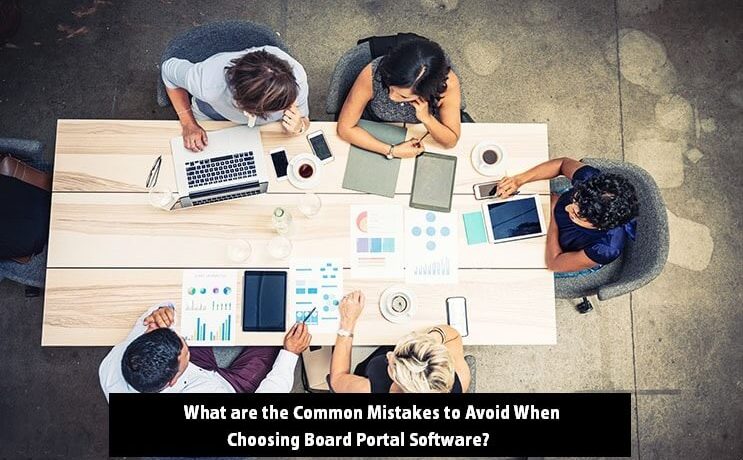What are the Common Mistakes to Avoid When Choosing Board Portal Software?

In every business, effective communication and team collaboration are essential for success. This is particularly true for organizations with boards of directors or governing bodies, where critical decisions are made.
So that a business can streamline operations and enhance governance practices, it needs to turn to board portal software. However, implementing such technology can bring numerous benefits, but there are common mistakes a business will make in the process.
Mistakes to Avoid When Choosing Board Portal Software:
1. Failure to Align Software with Board Needs
One of the most significant mistakes businesses make is investing in board portal software without fully understanding the specific needs and requirements of their board members. Every board operates somewhat differently, as well as have board members with different levels of communication preferences and tech savviness. Some boards may also have unique security preferences, such as hosting their data within their own country.
Before selecting a board portal software, businesses must conduct a thorough assessment of their board’s needs and preferences to ensure that the chosen platform aligns with them.
2. Ignoring User Experience
Another mistake is underestimating the importance of user experience. Board members, often busy executives, need intuitive and user-friendly software that allows them to access documents, collaborate, and communicate seamlessly.
Complicated or clunky interfaces can hinder adoption and discourage engagement. Businesses should prioritize board portal software that prioritizes user experience, with features such as mobile compatibility, intuitive navigation, and easy to use dashboards.
3. Neglecting Security Concerns
Security is paramount when it comes to board communications and document management. Unfortunately, some businesses overlook security considerations when implementing board portal software, exposing sensitive information to potential breaches.
To mitigate this risk, organizations must select a platform with robust security features, such as encryption, multi-factor authentication, and granular access controls. Regular security audits and updates are also essential to ensure ongoing protection against evolving threats.
4. Lack of Training and Support
Implementing board portal software requires more than just logging into the cloud-based software. Adequate training and ongoing support are crucial to ensure that board members and administrative staff can effectively utilize the platform’s features.
Failure to provide comprehensive training can result in underutilization of the software and frustration among users. Businesses should invest in training programs and provide accessible support resources to address any questions or issues that arise.
6. Overlooking Scalability
As businesses grow and evolve, so do their governance needs. Therefore, it’s essential to select board portal software that is easy to get started with, but can also scale as your board gets comfortable with the technology. Some businesses make the mistake of choosing a solution that meets their current requirements but fails to accommodate future growth – and are surprised at the cost to add more users or use more advanced features.
Scalable board software like Aprio ensures your board gets access to all features with no surprise add-ons or change in your subscription cost.
Conclusion
Implementing board portal software can streamline board communications and governance practices while keeping board information secure. This Leads to more informed decision-making and improved board productivity. However, businesses must avoid common mistakes to maximize the benefits of this technology.
